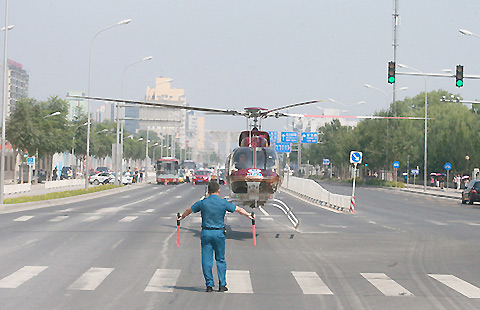
Once again, Chinese investors' confidence was put to a stress test recently after a small rally that lasted less than two weeks. It seems despite the economy's reasonable performance in the first half of the year, there are still many stumbling blocks that China must try to steer clear of in the second half.
China will have to keep up its domestic growth momentum considering the uncertainties in the global market, such as the Middle East, Ukraine and the eurozone; and in the United States, where the risk of so-called secular stagnation-which means savings are greater than investment and lead to higher than normal unemployment rates-exists.
Whether the same is true of China is hard to say, although on the macro level, many cities could be facing a lack of investment in the industries and services that would generate more jobs.
In the Beijing Development Area, the capital city's largest new industrial zone, the former mobile phone maker Nokia's production center, once one of the largest taxpayers in the city, has long passed its heyday.
Mercedes-Benz sustains a large number of jobs from there. But the market for luxury cars is no longer accelerating at previous speed, partly because of the largely environmental regulations on car ownership in some of the largest cities.
With the rising demand for smartphones and tablet computers, the liquid crystal display manufacturer BOE is growing "like a currency printing press", as one of its executives said, but its ultramodern assembly line hardly needs any workers.
There are many cities without such diverse opportunities. The local governments may have, and may continue to, generate some funds from land auctions for what the Chinese call people's livelihoods-related projects, such as better roads and wastewater recycling. But a lack of new industries and services will eventually make local land prices unsustainable-especially if there aren't many job opportunities around and many younger residents are lured by the industries and services elsewhere.
If many cities, instead of just a few cities, fail to invest in the industries and services with high growth potential, the problem would probably morph into a national crisis.
Concerns of that sort can be derived from chewing on some of the economy's latest data. For instance, from January to July, average growth in fixed-asset investment (which includes the money that went to the building of new factories) was 17 percent year-on-year, in comparison with 20.1 percent in the same period last year.
The growth from January to June, released only one month earlier, was 17.3 percent, or 0.3 point higher than the January-July figure.
The comparison indicates a more serious slowdown in July. It was attributed largely to three factors by the National Bureau of Statistics: falling investment in property development, overcapacity in so-called traditional industries, and a decline in the local governments' capability to finance investment programs.
The overall industrial growth rate came down a bit at the same time. In July, it was a 9 percent month-on-month growth from June. In June, it was a 9.2 percent growth from May.








